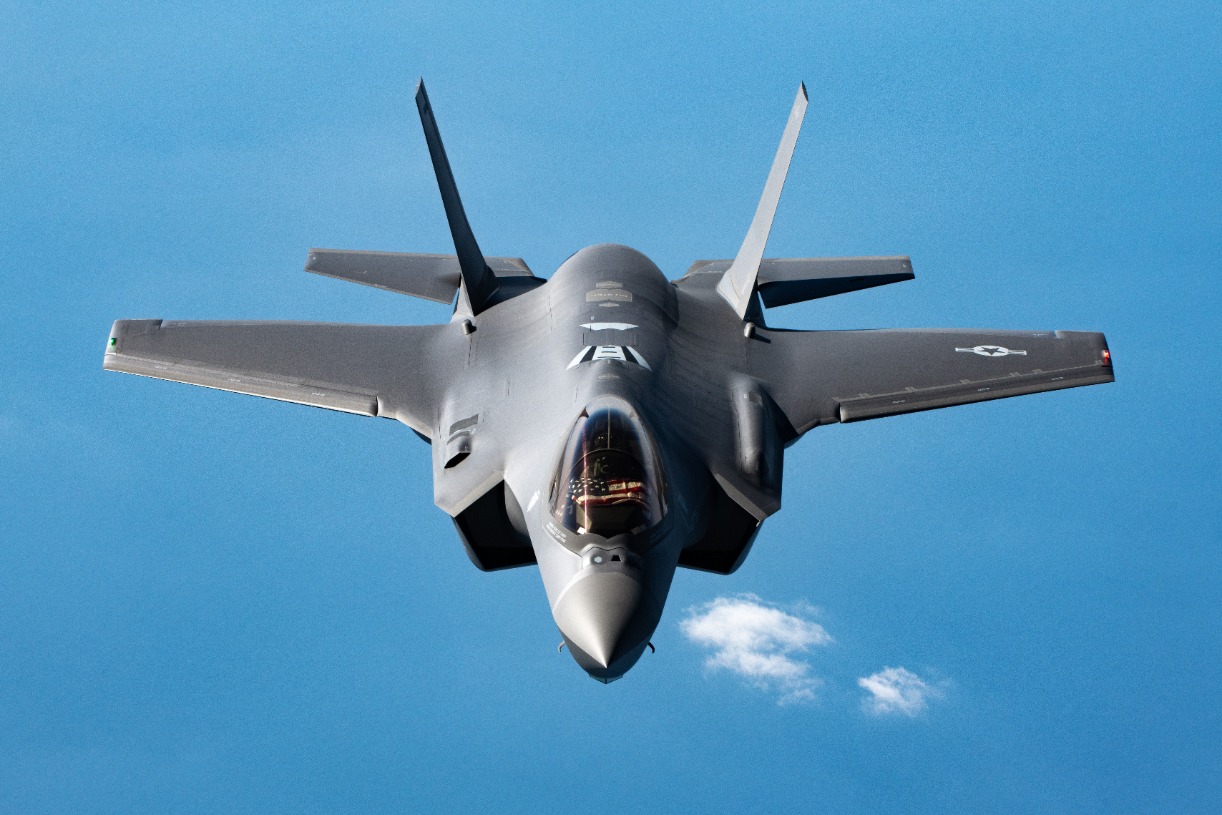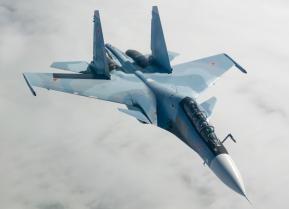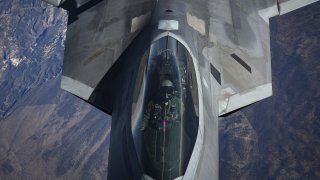The U.S. Military's Research and Development Challenge
Nurturing innovative startups in the DoD ecosystem is more challenging than it ought to be.
In an evolving world where the speed of tech development is increasing rapidly, the U.S. Department of Defense (DoD) finds itself increasingly behind. Even though the DoD recognizes the need for groundbreaking innovation to maintain a competitive edge, the gap with Silicon Valley is only widening. Historically, the DoD was a global research and development (R&D) juggernaut, comprising 69 percent of worldwide R&D in 1960. By 2019, this figure had plummeted to a mere 3.1 percent. This decline underscores the DoD’s diminishing influence in global innovation.
The dwindling share of R&D investment from the DoD, in contrast to the booming innovation in Silicon Valley, is a stark and alarming trend that, if left unchecked, threatens to erode the United States' position as a global leader in defense technology. The crux of the issue lies in the DoD’s antiquated funding models, which are ill-suited to meet the agile and rapid development cycles of startups striving to bring groundbreaking solutions to the defense sector. The stark disparity is evident in the Initial Public Offerings (IPOs) statistics: a mere single defense sector IPO, Palantir, amidst a sea of 3,300 IPOs across various industries from 2013 to 2022. This funding gap stifles the entire defense ecosystem, making billion-dollar “unicorns” exceedingly rare. It’s high time to modernize the DoD’s funding approach to ensure a robust and innovative defense sector.
The Challenge: Bridging the Funding Gap
The DoD faces a twofold challenge: it lacks the expertise to identify promising startups and the financial capacity to scale them to an Initial Public Offering (IPO). Reliance on private capital, specifically venture capital (VC), is crucial. Without it, the DoD’s innovation ecosystem risks mirroring a planned economy, a model that has underpinned China’s success, not America’s.
Despite the DoD being one of the world’s largest customers with a detailed budget that acts as a potential shopping list for investors, startups find themselves stranded. The budgeted funds don’t seamlessly convert into accessible startup capital, deterring VC involvement due to unclear returns. The call from VC leaders is clear: to “put its money where its mouth is.” The DoD needs to commit financially to these emerging technologies.
The Reagan Foundation’s National Security Innovation Base Report Card underscores this issue, assigning low grades to the DoD for customer clarity and stable funding. The legacy primes continue to consume a significant portion of the budget, sidelining startups.
For startups, this situation often leads to two paths: complete failure or a pivot to purely commercial ventures. A tech startup founder leveraging defense funding summed it up in an interview with the author: “We prioritize venture capital interests and commercial viability.” This trend clearly, is detrimental to defense innovation.
Compounding the issue is the DoD’s misclassification of startups as small businesses, overlooking the distinct differences in their missions, growth trajectories, and risk profiles. This not only stifles innovation but also impedes the integration of advanced technologies into the defense sector.
Distinctive Characteristics of Startups and Small Businesses
Though the terms “startup” and “small business” are frequently used interchangeably, they represent distinct operational models, leading to mismatched policies and funding mechanisms. The key differences lie in their divergence of growth goals, risk tolerance, and innovation focus.
Growth Goals: Small businesses typically seek steady, organic growth, prioritizing immediate profitability and often catering to local or niche markets. In stark contrast, startups chase hypergrowth and scalability, placing long-term market dominance above short-term gains. They aim for exponential progress, often at the expense of immediate profitability. The DoD’s preference for stability and extended contracts aligns well with small business trajectories but leaves high-growth startups without viable scaling options.
Risk Tolerance: Small businesses tend to be risk-averse, opting for gradual improvements and relying on internal funding or modest loans, all while maintaining operational stability. Startups, however, thrive on risk. They depend on venture capital and aspire to create transformative change, even if it means disrupting stable processes. The DoD’s intricate procurement processes and protracted timelines resonate with the cautious approach of small businesses but can alienate venture-backed startups, which inherently value speed and flexibility.
Innovation Focus: Small businesses excel at making incremental enhancements to operational efficiency, often overlooking groundbreaking technologies or business models. Startups, on the other hand, are innovation powerhouses, driven to disrupt existing markets or forge new ones through radical advancements. When startups are miscategorized as small businesses, they are funneled into traditional procurement channels designed for low-risk, incremental progress rather than transformative innovation. This misalignment not only curbs their innovative potential but also hampers the DoD’s access to cutting-edge technologies.
In sum, the DoD’s existing frameworks are more compatible with the cautious, steady nature of small businesses than with the dynamic, high-risk environment of startups. To truly foster defense innovation, a fundamental shift in understanding and supporting the unique needs of startups is imperative.
The DoD’s Uniform Approach: Stifling Startup Growth
Despite its professed dedication to innovation, the Department of Defense (DoD) adheres to a one-size-fits-all strategy, blurring the lines between startups and small businesses and creating a false sense of accessible funding for the former. This approach impedes startups from securing suitable funding and achieving their innovation potential.
Ineffective Funding Programs
The Small Business Administration’s (SBA) Small Business Set-Aside (SBSA) contracts, seemingly a boon for startups, in reality, impose strict criteria and revenue limitations, excluding most high-growth startups. Meanwhile, the Small Business Innovation Research (SBIR) program offers insufficient funding, especially in its early phases, barely sustaining capital-intensive startups. These SBIRs have done little to help scale startups. From 2010-2019, the government awarded over $24 billion in SBIR grants through over 50,000 Phase I and II awards. There have only been a small handful of companies that have scaled off SBIRs, including Qualcomm, Anduril, and 23andMe. These Phase I and II grants are hardly enough money for a deep tech startup burning through millions of dollars each year.
Moreover, Phase III awards are rare and do not guarantee subsequent large-scale contracts, leading venture capitalists (VCs) to view SBIR involvement skeptically. The program’s criteria further disqualify startups with significant VC ownership, exacerbating the funding challenge. “SBIR mills,” which exploit the system without intent to commercialize, have prompted recent regulatory adjustments. As Senator Rand Paul (R-KY), an outspoken critic, pointed out, “We need to question if this program should continue to exist… at the very least we need to stop the abuse of these SBIR mills.” Nevertheless, these changes fail to address the core issues of misaligned funding and support.
The Challenges of Programs of Record
For the few startups that navigate these hurdles, the next formidable challenge is capturing a Program of Record (PoR), a multi-million-dollar contract essential for scaling and attracting VC interest. The DoD’s budgeting and procurement processes, rooted in Cold War-era systems, are ill-suited for today’s fast-paced, dual-use technology landscape, leaving startups at a disadvantage.
Pioneering Solutions and a Call for Strategic Realignment
The challenges startups face in navigating the Program of Record (PoR) labyrinth underscore a broader issue: the misalignment of the Department of Defense’s (DoD) antiquated systems with the dynamism of today’s tech landscape. Addressing this requires more than incremental change; it calls for a bold, strategic realignment of the DoD’s approach to innovation.
Innovative programs like the Defense Innovation Unit (DIU) and the Pilot Program Accelerate the Procurement and Fielding of Innovative Technologies (APFIT) are showing the way forward. They offer startups the flexibility, focus on dual-use technologies, and substantial funding necessary to traverse the “Valley of Death.” Yet, their impact is limited by their scale. To truly transform the defense innovation ecosystem, these programs must be expanded and empowered.

The need for change extends beyond these programs. The DoD must overhaul its funding mechanisms and procurement processes, establishing clear distinctions between startups and small businesses and tailoring support to meet the unique needs and potentials of each. This strategic realignment is a critical investment in the future of defense innovation, ensuring that the U.S. maintains its technological supremacy and safeguarding national security in an increasingly complex global landscape.
Emma Robinson is a dual MBA & MA in International Studies candidate at Wharton and the Lauder Institute at the University of Pennsylvania. She has previously served as an aerospace consultant at Avascent—a defense consulting firm.
Farah N. Jan, PhD, is an international relations Senior Lecturer at the University of Pennsylvania. Reach her on Twitter @fjan1.
Image Credit: An F-22 Raptor assigned to the 27th Fighter Squadron at Joint Base Langley-Eustis, Va., receives fuel during Red Flag 18-1 over the Nevada Test and Training Range, Feb. 7, 2018. Red Flag helps pilots train for real-time war scenarios and tests their readiness for future conflicts. (U.S. Air Force photo by Airman 1st Class Andrew D. Sarver)


